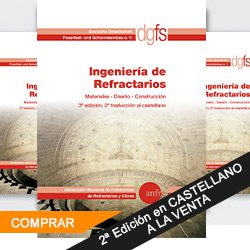Slowing EU steel demand, global overcapacity and weaker worldwide demand could become a major threat to European steel market stability.
The growth in apparent steel consumption in the EU will slow to only 0.5% in 2019, followed by a 1.2% rise in 2020, European steel association Eurofer said on Thursday January 31.
Europe’s apparent steel consumption was forecast to reach 164 million tonnes in 2019 and 166 million tonnes in 2020.
These numbers are «less than one-third of the compound annual growth rate of apparent steel consumption over the period 2014-18,» according to Eurofer.
Development of EU steel demand – in combination with global overcapacity, slowing worldwide demand and increasing protectionism – might become a major threat to the stability of the European market.
Although the European Commission (EC) announced its final decision in a safeguard case concerning a number of steel product categories on February 1, Eurofer is concerned that the measures might not be be enough to protect the domestic market.
Definitive measures were set in the form of partially country-specific tariff rates and quotas for 26 steel product categories.
Eurofer estimates that the EU’s apparent steel consumption rose by 2.6% year-on-year to 163 million tonnes in 2018.
However, European mills have not fully benefited from the rise in consumption, with steel import increasing by 12.3% year-on-year. European producers barely gained from domestic growth, it added, with shipments to the domestic market picking up by only 0.6% year-on-year.
«The sharp increase in imports in the second half of 2018 is proof that, in spite of the justified imposition of preliminary safeguard measures by the [European] Commission last July, the EU market is still under siege,» the director general of Eurofer, Axel Eggert, said.
«Market access to other regions has been blocked by protectionist measures in those places, leading to a continued diversion of steel to the EU market,» he added.
Fastmarkets’ weekly price assessment for domestic hot-rolled coil (HRC) in Northern Europe was €520-530 ($597-608) per tonne ex-works at the end of 2018, down by 5.83% since the beginning of July that year.
Domestic prices in Europe moved down on slow trading and on tough competition from imports, particularly material originating from Turkey. Turkey has redirected significant volumes of material to Europe from the US market due to that country’s Section 232 measures.
Fastmarkets’ weekly price assessment for HRC imported into Northern Europe was €480-490 per tonne cfr main ports in late December, down by 12.61% since the beginning of the third quarter.
«The diversionary trend [in the EU steel market] is expected to continue in 2019, especially because the safeguard quota will be increased by 5% in February and by another 5% in July,» Eggert said.
«This ‘relaxation’ could occur even as 2019 EU steel demand is forecast to be flat,» he added, «and [means] even greater uncertainty for steel producers.»



